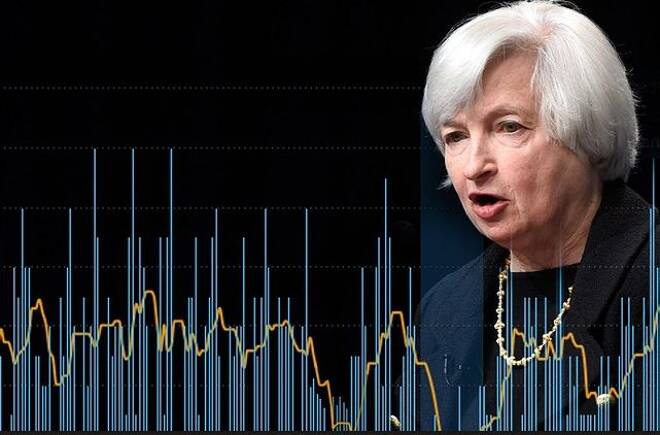Advertisement
Advertisement
Is the Fed Raising Rates to Cool Inflation or Prevent an Asset Bubble?
By:
On Friday at 1500 GMT shortly after the release of the widely watched U.S. Non-Farm Payrolls report and at the end of a U.S. holiday-shortened week, the
On Friday at 1500 GMT shortly after the release of the widely watched U.S. Non-Farm Payrolls report and at the end of a U.S. holiday-shortened week, the U.S. Federal Reserve released its semi-annual monetary report to Congress, which Chair Janet Yellen will deliver to Congress next week.
I suspect that a few Fed conspiracists took notice, but I don’t think that was the intention of the schedulers to raise issues about the central bank attempting to hide any key information. After all, the report offered no surprises and pretty much reiterated the Fed’s message in its last monetary policy statement released in mid-June. It also seemed like another version of the Fed minutes which were released last week.
Essentially, the Federal Reserve Monetary Policy report said the central bank expects the U.S. economy will strengthen and warrant further gradual increases in its key interest rate.
Since last December, the Fed raised interest rates three times. Its benchmark rate is now sitting in a range of 1 percent to 1.25 percent. Peanuts! Some exclaim, but I think investors are starting to take notice. The rate may be relatively low when compared to historical norms, but since the financial crisis nearly a decade ago, we may have a new norm. More importantly, the moves by the Fed and the expected moves by the Fed over the next year, represent a trend. And this is what’s making investors nervous.
The Fed noted in the report that it still expects one more rate hike this year and another three hikes in 2018. The central bank also said that the projected pace of hikes would still allow the labor market to keep strengthening and inflation to climb to the Fed’s 2 percent target. The Fed also said it expects to begin reducing its massive bond holdings this year.
If I were on the Congressional panel…..
If I were sitting on the Congressional panel next week, my first question to Yellen would be, if raising rates is supposed to slow down the rate of inflation then how can the Fed expect inflation to climb to the Fed’s 2 percent target in the future if you are raising rates now?
She’s probably going to reiterate what the report says that even though inflation has slowed a little since the beginning of the year, the central bank still expects price gains to resume rising toward the 2 percent target, helped in part by stronger wage gains.
I’d then ask her if she was happy with the 0.2% wage gain reported in Friday’s U.S. Non-Farm Payrolls report. The one that fell short of the 0.3% estimate.
I’d then ask her to explain what she meant when she said recently that banks are “very much stronger” and another financial crisis is unlikely anytime soon. I’d also ask her to explain how she can predict that because of the measures the Fed has taken, another financial crisis is unlikely “in our lifetime” when last week’s Fed minutes showed some committee members were also concerned that investors had not reacted to the central bank’s last three rate increases, with financial conditions remaining easy despite the rising cost of borrowing.
Additionally, Fed policymakers also said “equity prices were high.” The minutes also showed that policymakers thought maintaining low interest rates could lead to a “buildup of risks to financial stability.”
Finally, I’d ask Fed Chair Yellen if the central bank was raising rates to cool off the stock market because she feared a bubble on her watch, since it doesn’t make sense to me to continue to raise rates aggressively when inflation is below the 2.0% target and GDP growth is also weak.
About the Author
James Hyerczykauthor
James Hyerczyk is a U.S. based seasoned technical analyst and educator with over 40 years of experience in market analysis and trading, specializing in chart patterns and price movement. He is the author of two books on technical analysis and has a background in both futures and stock markets.
Advertisement
